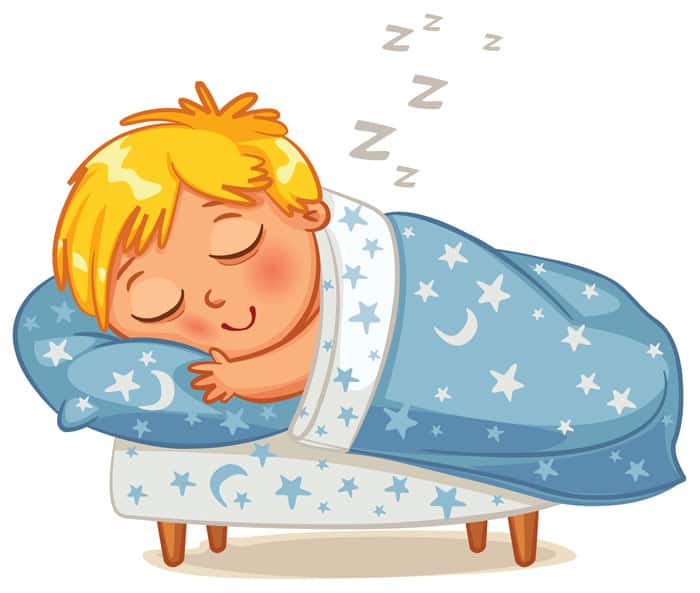10 Useful Tips For Your Child’s Sleep Problem
1. Your Child’s Environment
To begin reducing any sleep problem, make sure the environment is conducive to sleep. Screens before bed can interfere with a child’s ability to fall asleep. Children who fall asleep watching television are more likely to wake in the night either because it has been switched off and they are used to it being on or because of the noise and light it is emitting. Think about the noise, light and temperature in your child’s sleep environment and whether you need to do anything to make it quieter, darker or warmer or colder. Consider whether you have any pets that are going in and waking the child at night.
2. Tone Of Voice
Think about your tone of voice. As much as possible, you should try to stay calm about bedtime. If things start to become frantic, try to be firm without raising your voice. Try not to get drawn in to discussions or arguments with your child and keep your mind on the task you are trying to get them to do.
3. Bedtime rituals.
Children are often helped by consistency and routine. It helps them to understand what is going to happen next. It also helps them to wind down for bed. Different families choose to include different things in their nighttime routines. Examples include, a bath, a story, a song, a special rhyme or a prayer.
 4. Use Time
4. Use Time
Use a clock that changes colour or picture to help young children know when it is bedtime and when it is time to get up e.g. Gro-Clock, Tot Clock.
5. Earlier bedtime.
Children who are overtired often wake more through the night and earlier in the morning. Make sure your child is going to bed early enough.
6. Graded removal.
If your child is used to you staying with them until they fall asleep and you want to stop doing that, one method can be graded removal. Over several nights, you sit gradually further away from the bed until you are sitting outside the room with the door open and eventually with the door closed. If your child is old enough, explain to them why you want to make the change and involve them in agreeing the steps.
7. Reward system.
Reward systems can be incredibly effective as long as they are specific, short-term and a reward that the child wants. For young children, stickers or colouring something in on a chart are often sufficient. Older children will likely need something else. Reward systems can be good for reinforcing staying in bed, getting in to bed by a certain time or returning to bed after visiting a parent’s room in the night (younger children will likely need to be walked back but can have a sticker in the morning if they do it with minimal fuss).
8. Anxiety management.
If you think your child is anxious about something at bedtime, try to explore that with them. Give them some gentle reassurance but also try to prompt them to give their own ideas and solutions for what will help them feel less worried.
9. Creative interventions.
Some playful interventions can be helpful around sleep problems. Examples include:
• Monster spray (water in a spray bottle with a special label that you spray around the bedroom before the child goes to bed)
• A home made monster shield
• Get out of bed pass. For children who frequently think up reasons they need to get out of bed at bedtime, you make up a special pass for them and tell them they are allowed to use it once a night.
10. Consider Help
Consider seeking professional help for persistent nightmares especially if there has been a trauma or significant loss. A professional can also help children with anxiety management and help families to develop sleep intervention plans specific to them.
Top “Sleep Problem” Tips
⁃ Things can change if you want them to
⁃ Consistency is key
⁃ Involve your child in the changes as much as possible
⁃ Seek professional help if your child’s sleep problems impact family life or their day to day functioning















